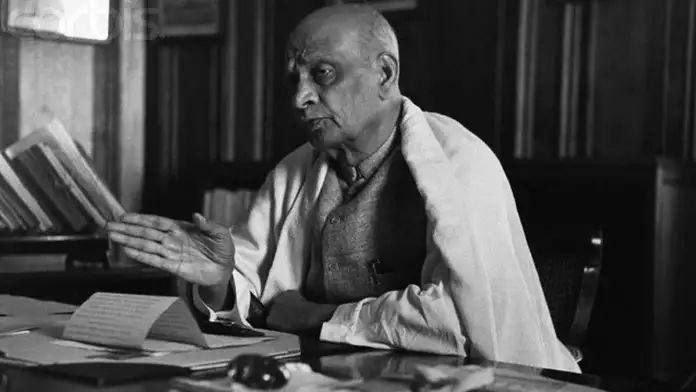There is not much one can say about Sardar Vallabhbhai Patel besides the fact that he integrated 562 princely states within the Indian Union, which is his greatest achievement.
Without undermining the Herculean task Patel achieved, it must also be remembered that the integration work occupied only the last couple of years of his 75-year-long life. What he did in seven decades before that mostly remains out of collective public memory.
A barrister from London and a fierce criminal lawyer with a booming practice in Ahmedabad, Vallabhbhai Patel was drawn to politics by the simple, direct yet novel approach of Gandhi. He became Gandhi’s close associate from Kheda Satyagraha in 1918, a campaign against unjust land taxation. Patel was a widower of 43 years then. After the Kheda campaign, Gandhi remarked, “I must admit that when I met Vallabhbhai first, I could not help wondering who this stiff-looking person was and whether he would be able to do what I wanted. But the more I came to know him, the more I realized that I must secure his help…If it were not for his assistance, I must admit that this campaign would not have been carried through so successfully.”
Patel saw a perfect leader in Gandhi who was courageous, committed, and innovative. He was not much interested in philosophical discussions. But he adopted and internalised from Gandhi things like spinning, khadi, non-violent strategies, communal harmony, eradication of untouchability, all silently with his own understanding. Subsequent satyagraha movements proved that Patel was an excellent organiser and effective administrator, a committed soldier, and an able commander with feet firmly on the ground.
Where he proved his mettle
Nagpur Flag Satyagraha in 1923 saw an extension of Patel’s leadership outside Gujarat and the Borsad Satyagraha the same year, against punitive tax, established him independently as a worthy commander of Gandhi’s non-violent force. C. Rajagopalachari took note of Patel after the Nagpur Flag Satyagraha saying, “Mr. Vallabhbhai was deputed to Nagpur to carry on his task which was hardly easy or encouraging. He has carried it out nobly and manfully. Those who fought whilst the struggle was on, demonstrated by their manner of fighting that no battle could be fought in a cleaner manner. It was left to Mr. Vallabhbhai to demonstrate that none could be won also in a cleaner manner.”
The successful satyagraha in Bardoli in 1928 against the revised rates of land revenue catapulted Patel into national prominence. Both Borsad and Bardoli satyagraha were led by Patel as per Gandhi’s playbook. The resonance of Bardoli Satyagraha was nationwide. Munshi Premchand wrote an article titled Veerbhoomi Bardoli [Bardoli—land of the brave] in the November 1930 issue of his magazine Hans. It was the Bardoli Satyagraha that earned Patel the nickname Sardar. He became the president of Congress once, in 1931, but withdrew his candidature on two occasions on the suggestion of Gandhi. (Ame Baap-Dikari, Maniben Patel, Sardar Shatabdi Smarak Granth, 1976, Sardar Patel University, Vallabh Vidyanagar, Page 94)
Patel had his share of jail terms too — six times totalling around six years. In one of his jail terms, he was imprisoned with Gandhi and Mahadev Desai at Yerwada Jail in 1932 for nearly 16 months. Patel was, perhaps, the only national leader to conduct several satyagraha movements under the direct watch of Gandhi and to stay with him in jail for such a long time.
When Patel was jailed for the first time, just before the famous Salt March, Gandhi mentioned the former’s service to people in an article. “Why would Sardar not expect from Gujarat? Didn’t he serve the labourers? Didn’t the post employees and railway employees take lessons of swaraj from him? Which resident of Ahmedabad is unaware of his service to the city and his willingness to sacrifice? Vallabhbhai, the man who arranged for the treatment of the sick during the Plague, helped during the draught, served Gujarat during the great floods, secured crores of rupees from the government for relief work, preparing people for the final battle of Purna Swaraj [complete independence] has reached the prison while performing his duty…”
Patel in Congress
Patel started as an Ahmedabad-based leader in the Congress but soon rose to become the first president of the Gujarat Provincial Congress Committee in 1921. He proved to be an extremely successful fundraiser even when Congress had no political power. He raised lakhs of rupees for wide-ranging causes, including Tilak Swaraj Fund, Gujarat Vidyapith, relief work to name a few. By the time provincial elections were held for the first time in British India in 1937, Patel was a major force in the party. He collected funds, selected candidates for the election, and proved a solid party machine to back Nehru’s popular appeal. The differences and occasional outburst of it could not stop the two from being companions in a common cause. Passionate idealist Jawaharlal Nehru and the 14 year older realist, grounded administrator Patel complemented each other under the moral authority of Gandhi. They became inseparable parts of the Swaraj troika along with Gandhi. Remember the famous photo of the Quit India Movement of August 1942, in which Gandhi is flanked by Patel and Nehru?
Patel was arrested with the entire top leadership of the Congress during the Quit India Movement and sent to Ahmednagar Fort jail in 1942. In a letter to his daughter-in-law Bhanuben, dated 1 July 1943, Patel wrote, “…I shall survive till God wishes. If he wishes to call me, I am ready. I will have to depart if my lifework is completed and if my work is remaining, I will stay. Who knows?… I am 69. I have done whatever I should have in life. What could be better if I depart while performing what I have considered as my dharma?…”
Little did Patel know that the work that would become synonymous with his life was still awaiting him outside the prison.



